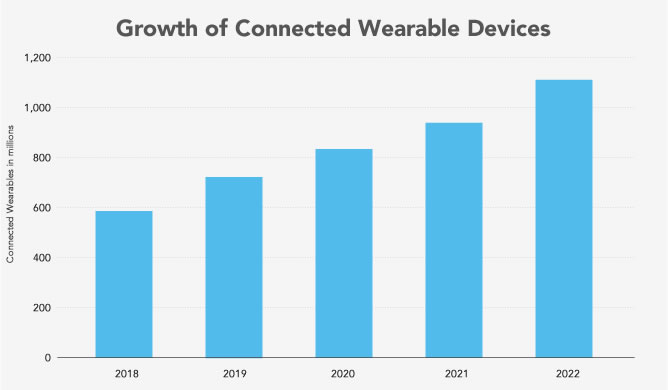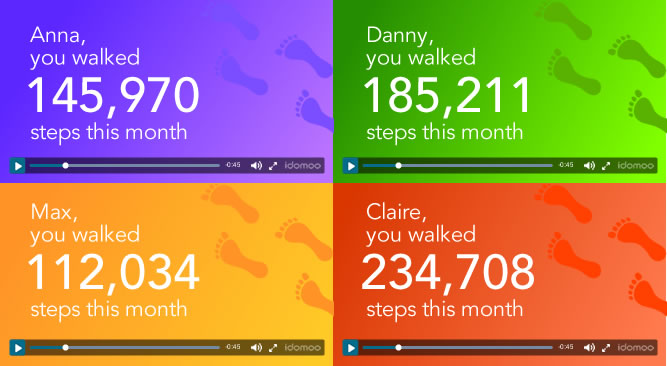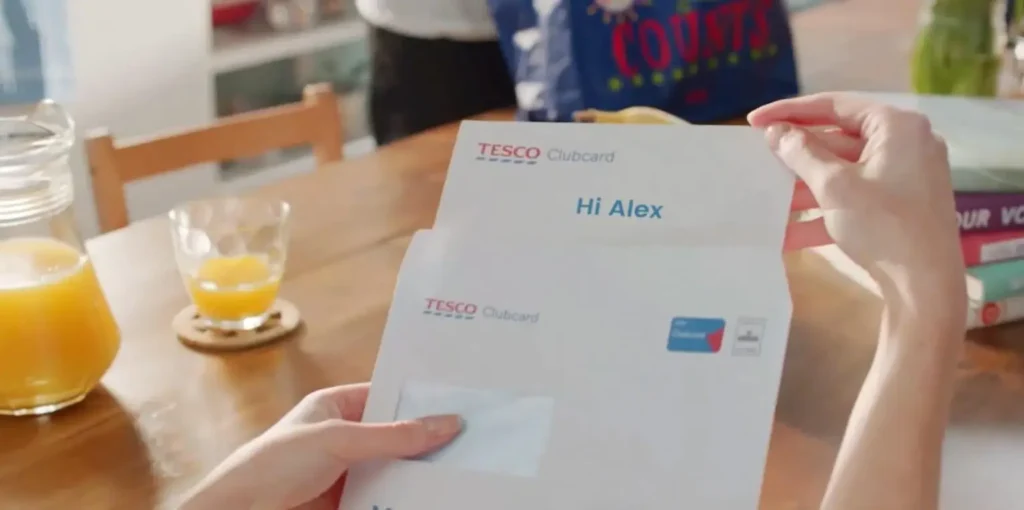Personalization is no longer an option when it comes to customer communications. Recent research has revealed that an overwhelming 82% of customers cite personalized experiences as a key driver in their brand choices. And this trend holds particular significance in an industry like health and wellness, where every person’s journey is unique and deeply personal.
Whether you’re a gym, a doctor’s office or a health insurance company, your customers already expect 1:1 attention. This is about their health, after all. Every touchpoint, from the front office to a bill explainer, needs to make that person feel like you know and understand their individual needs.
Take a look at these results about personalization in healthcare from a recent survey.
- 54% of consumers think healthcare providers and insurers aren’t doing a good job personalizing healthcare recommendations.
- 75% of patients want deeper personalization in healthcare.
- 61% would visit their provider more often if the communications experience felt more personalized to them.
The takeaway is clear: Healthcare and wellness companies need to do a better job of personalizing customer interactions. Here are the 7 trends you need to know that are reshaping personalization at every stage of the customer journey.
1. Virtual Wellness Experiences
We increasingly saw physical spaces become digitized during the COVID-19 pandemic, a trend that has continued to evolve and expand in the post-pandemic world. Virtual fitness companies, on-demand wellness programs and telehealth appointments are fast becoming the norm.
A McKinsey survey revealed that consumer adoption of telehealth jumped from 11% in 2019 to 46% in 2020, and while telehealth usage rates peaked during the pandemic, they still remain higher than pre-pandemic levels.
But there’s a problem. Digital experiences can often come across as impersonal and generic. As humans, we crave a real, person-to-person connection that’s hard to replicate online.
Personalization bridges the gap, giving online interactions a human touch. Here’s what that might look like in a virtual health and wellness setting:
- A celebratory, personalized GIF when your customer reaches a health milestone
- A virtual workout class that offers individual feedback on form and effort during exercises
- An interactive video with links to the patient portal for lab results or visit summaries
Today, it’s clear virtual wellness experiences weren’t just a temporary pandemic-era fix. Offering flexibility, accessibility and personalized care options that cater to diverse patients, they’re increasingly becoming integral to healthcare delivery.
Looking forward, we can expect virtual wellness experiences to continue to mature and be a part of everyday life, with the emphasis on personalization only growing stronger. As technology continues to evolve, the use of artificial intelligence and machine learning will likely further optimize these personalized experiences, making them even more intuitive and effective.
2. Wearable Tech
Wearable tech increases the availability of data, making personalization that much easier. These devices, which include smartwatches and fitness trackers, capture a wide range of health metrics in real time. This allows for a deeper understanding of an individual’s health and fitness patterns, making it possible to provide actionable tips and info tailored to each user.
Source: Statista
The use of on-the-go wellness technology is growing, especially among Gen Z and millennials. In one survey, over half of all respondents in this demographic said they use wearable tech or a mobile app to help manage their lifestyle and healthcare.
What’s the big draw? The individualized data provided through the technology. These devices monitor everything from heart rate and sleep patterns to physical activity and even stress levels. When this data is analyzed, users can receive personalized insights that can significantly enhance their health and well-being.
For example, consider how Fitbit updated their app for better personalization and an improved customer experience. The app lets users easily log relevant data throughout their day. Based on that data, insights, messages and suggestions appear at the top of the screen to boost well-being. This is health and wellness personalization in action at its best.
Emerging wearable health technologies are also transforming remote care. Devices such as continuous glucose monitors and wearable ECGs are revolutionizing how chronic conditions are managed through individualized real-time data collection.
These innovations deliver precise, personalized insights to patients and their providers, allowing for timely and tailored interventions. The result is that care is more proactive than reactive, with treatments and recommendations better customized to each patient’s unique health history and needs.
3. Personalized Videos
The secret is out about video. It’s the most popular form of content on the internet. And it’s effective. Viewers retain 95% of a message when it’s delivered using video compared with text. It’s also the preferred medium among younger internet users. Just look at the rise of TikTok.
How does that fit into personalization? There are a couple important factors.
Videos personalized with data make complex topics easier to understand.
What’s more complicated than healthcare? Unless you’re a specialist in the field, it can be challenging to understand all the nuances that go into taking care of your overall well-being.
Video reduces confusion and cuts the fine print no one reads. From bill explainers to personalized customer onboarding videos, you can share exactly what your customer or patient needs to know in a format they’ll actually pay attention to.
For example, the National Health Service of England wanted to support people with Type 2 Diabetes in meeting their wellness goals through a personalized care planning service. To help, they sent out Personalized Videos that simplified complex information like test results and provided clear, personalized guidance based on the viewer’s needs.
Data-driven videos can motivate and inspire viewers.
This is all the more important for healthcare organizations.
A personalized recap video can show someone where they’ve been and encourage them to continue improving on their wellness journey. Using data, you can add their specific milestones to create something unique for every individual.
Take this campaign from Orangetheory Fitness as an example. They were able to send personalized highlight reels to customers at scale by using data-driven video. For a truly innovative twist, they even personalized the music based on the customer’s workout heartbeat.
The campaign definitely paid off, with the videos successfully motivating customers to keep up their efforts. An additional 45,000 classes were booked during the launch of the campaign, with Orangetheory Fitness seeing a record-high attendance rate of 97%.
4. Chatbots That Are a Little Bit Smarter
Chatbots are a great way to connect with current or potential customers to answer their questions and engage them one-on-one. The recent State of Conversational Marketing report showed that chatbots are the fastest-growing brand communication channel. It’s true — customers are already starting to expect chatbot communication from their favorite brands.
But the key to making this tool effective is personalization, putting a face on your chatbot, if you will. This means integrating features that make interactions more relevant and human-like, leading to users feeling comfortable and understood.
With data-driven video, you can create a chatbot experience that goes beyond text output and is still hyper-tailored to every customer. This is key for the wellness industry, where customer care is highly individualized based on personal health needs and goals.
For instance, imagine a customer seeking advice on a new fitness regimen in light of an ankle injury. A personalized chatbot can provide tailored suggestions based on the user’s health data, preferences and past interactions, making the output much more relevant and helpful.
This kind of service could apply to countless scenarios. Say a patient or customer is on the company’s website. If they’re logged in, they can talk with a chatbot to ask a range of questions. Some of these will trigger a video, generated in real time, drawing on up-to-the minute information about that customer.
The generated video could address the customer by name and walk them through how to access their online account and end with a reminder of their next appointment. It could even include personalized wellness tips, reminders to refill prescriptions or encouragement based on their personal health journey, which adds a human touch to digital interactions.
Imagine how great a customer service interaction like that would be for the user. That’s the kind of digital personalization consumers are increasingly looking for. No doubt, a chatbot that remembers your last conversation, understands your health goals and provides rea
5. Hyper-Targeted Ads
Ads tailored to individuals based on their needs, interests and past behavior are everywhere. Amazon is the classic example. The platform is known for showing you product recommendations based on items you’ve already viewed.
In other words, even seemingly simple personalization techniques like targeted recommendations can make a big impact.
Consider these findings from Accenture:
- 48% of consumers left a brand’s website and made a purchase elsewhere because the experience wasn’t curated for them
- 91% of consumers are more likely to shop with brands that provide relevant recommendations.
Personalized ads are nearly 2x as powerful as generic ones. Note that personalization doesn’t have to be creepy — “Hi, John, try this low-carb meal kit for your family of 3. Even your daughter, Sarah, age 6, will love it!” — but it should be relevant.
One of the most effective ways health and wellness brands can get started with personalized advertising is by tapping into the wealth of data available on social media. For example, you can combine Facebook’s algorithm-rich ad model with data-driven video to instantly increase the effectiveness of your ad. These Dynamic Video Ads deliver a 5x uplift in CTR compared to generic video ads.
Here’s a dynamic ad example from another industry.
By leveraging videos that are truly dynamic — able to automatically sub in different scenes based on consumers’ behavioral and demographic data — you’re making your offer more relevant and more relatable. It’s in the context of what they care about.
For example, a fitness brand could create a video ad that changes scenes to show different types of workouts based on whether the user has shown interest in yoga, weightlifting or running. This makes the ad significantly more relevant and impactful, enhancing the likelihood of a positive response.
Beyond social media, we’ve seen companies use personalized quote videos as another avenue for customer acquisition. If you’re advertising health insurance, your future customer can enter their requirements directly into the video and then watch it update in real time with a quote just for them. This kind of tailored advertising cuts through the digital noise, driving up conversions.
By continually refining these personalized advertising techniques, healthcare brands can stand out from the crowd with targeted, meaningful content. This not only drives con
6. Loyalty Programs to Boost Retention
Loyalty programs are a boon when it comes to reducing churn: 81% of loyalty program members buy from the brand more frequently, with 76% spending more. When handled properly, they do more than just help you keep customers — they turn your biggest fans into true brand advocates.
Sadly, most loyalty programs today aren’t doing this. Why? A lack of personalization is a big part of it. Customers crave experiences tailored to their individual needs and preferences. When loyalty programs fall short of these expectations, the disconnect becomes evident.
Only 2 in 10 loyalty program members say they’re very satisfied with the level of personalization their program provides. Think about it. This isn’t your average customer. It’s someone who’s spent a lot of time with you, invested in the relationship. If you communicate with them in generic terms, without the emotional appeal and relevance of personalization, are you showing them you understand their needs?
In the wellness space, ways to personalize a loyalty program might include:
- A points system where consumers earn points based on workout completion and consistency
- Giving each customer their own personalized referral code to share with friends
- A motivational year-in-review video recapping their biggest achievements
As one example, see how WW (formerly Weight Watchers) motivated their customers to keep moving with a personalized year in review.
The great thing about personalized recap videos is that they summarize an individual’s activity, letting them see high-level trends and understand their past performance. Better yet, it’s fun to watch — and also fun to share on social media, inspiring their friends to join in.
These kinds of recaps make customers feel good about their accomplishments while also fostering a sense of community through social sharing. This strengthens the customer’s emotional connection to the brand and amplifies the brand’s reach through user-generated content.
Personalized rewards are another great way to delight your loyal customers. A tiered rewards system could offer personalized prizes such as:
- A discount on the customer’s next purchase
- Branded merchandise the customer has expressed interest in
- Exclusive access to new products or services
You could also use these rewards and prizes as incentives for customer feedback. By periodically surveying loyalty program members about your products, services or even the loyalty program itself, you can ensure your offerings remain relevant and desirable to your core customers.
All in all, personalization in loyalty programs works to inspire a deeper level of engagement that not only retains customers but also transforms them into enthusiastic brand advocates who share their positive experiences with others. And in a highly competitive industry, this could be the key differentiator that sets a brand apart.
7. Gamification
Another powerful trend and tactic that’s taking over the health space is gamification. Personalization in health and wellness is all about tailoring experiences to individual needs and preferences, and gamification contributes to this by offering personalized challenges and goals.
At its core, gamification taps into our innate desire for achievement, recognition and competition. By setting personalized health challenges, such as daily step goals, workout streaks or mindfulness sessions, gamification not only encourages greater engagement but ultimately leads to real change by making health activities more motivating and enjoyable.
A great example of this in the health sector is the success of apps like Strava, which gamifies running and cycling activities by allowing users to compete for segment records and achievements. In addition to tracking performance metrics, the platform also analyzes data to offer personalized insights and suggestions for improvement.
Additionally, Strava integrates social elements into the gamified experiences, allowing users to compete or collaborate with friends and peers. This not only adds fun and motivation to the app experience but also creates a supportive community around health goals.
Gamification represents a game-changing trend in the health and wellness space. By combining gameplay with personalization, it simultaneously drives customer engagement and empower users in their health journeys. The impact is undeniable, with brands able to effectively encourage individuals to achieve their goals and pave the way for a healthier future.
Finally, Health and Wellness Gets Personal
Creating personalized experiences for each of your customers might seem like too much time and effort. But the impact it has on customer loyalty and satisfaction makes it worth the extra effort.
The first step is getting to know your customers. Who are they? What do you know about them? (That is, what data do you have about them?) How can you use that data to provide better customer service, clearer explanations of healthcare options, surprises that boost retention and more?
Once you know who your customers are and what they want, you’re ready to create content that serves them and meets their needs. Whether it’s through interactive chatbots that provide real-time assistance or data-driven videos that simplify complex medical concepts, personalized digital interactions can make healthcare services more accessible and engaging.
By humanizing your digital interactions through personalization, you’re not just delivering helpful information and guidance, you’re improving lives — and isn’t that what working in health and wellness is all about?
If you want to know how to combine personalization with video at scale, even if you have thousands or millions of customers, click below to schedule a call. We’d love to show you how it works.








